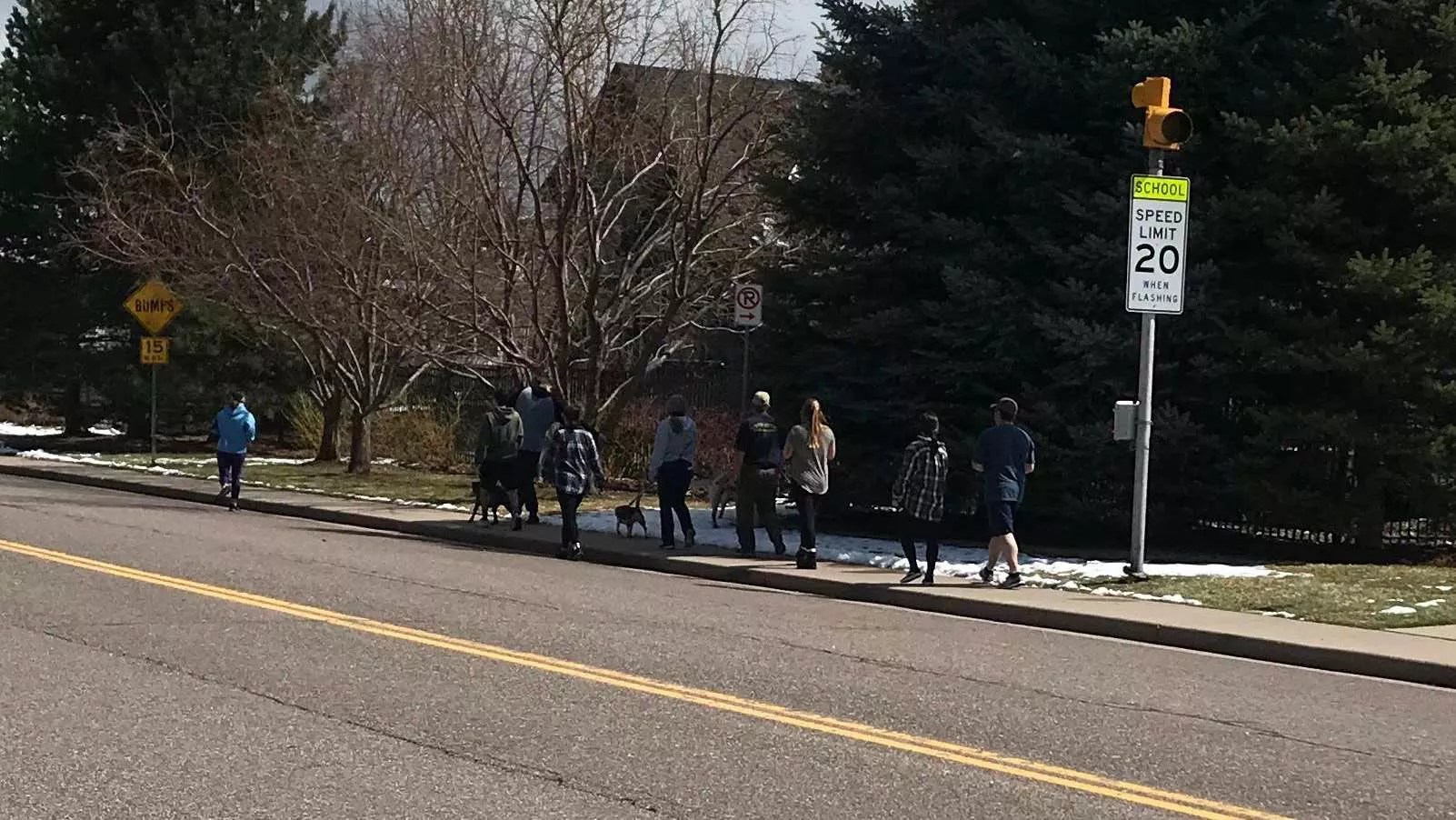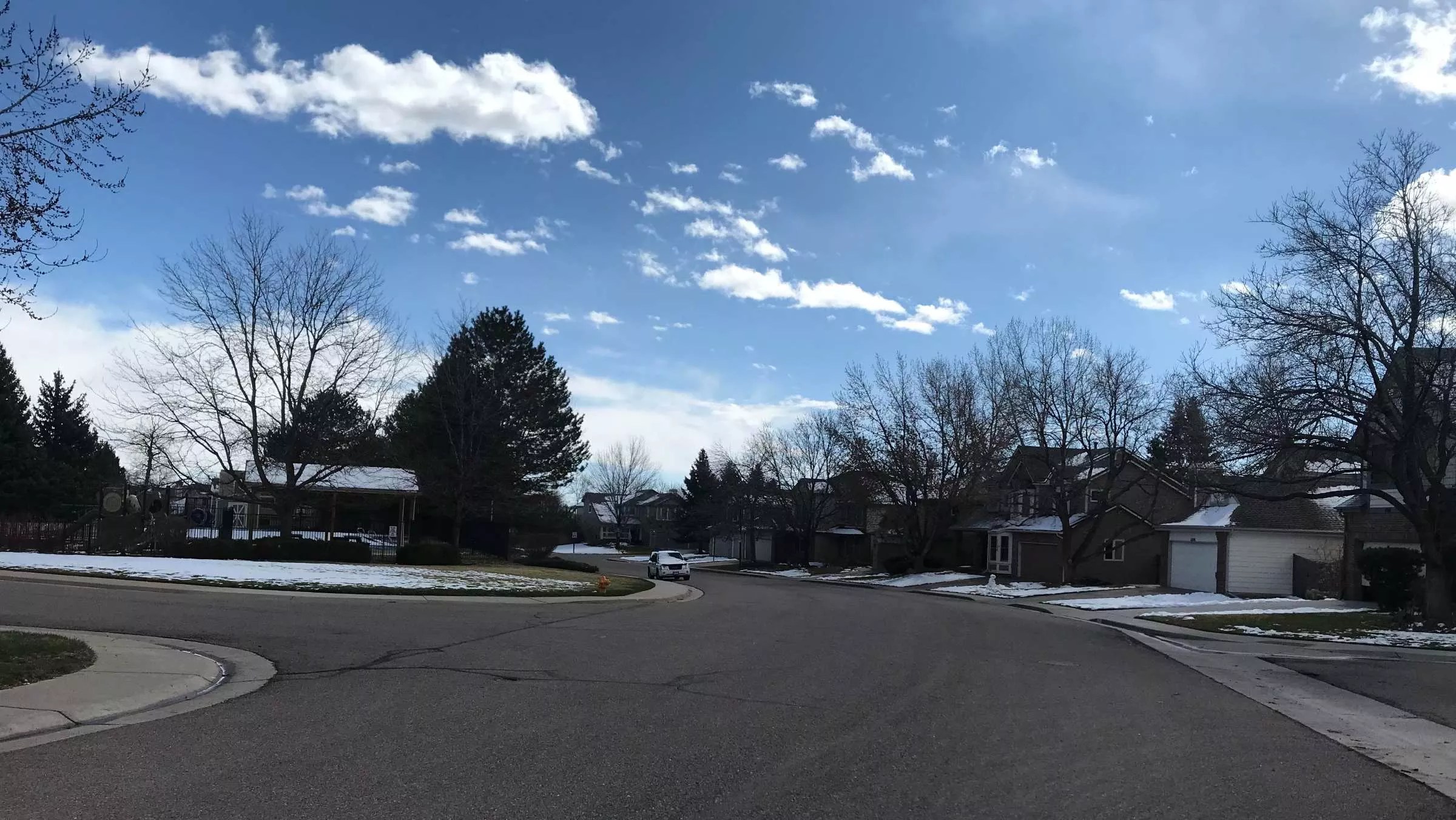
Photo by Michael Roberts

Audio By Carbonatix
At 5 p.m. today, March 24, a stay-at-home order for the City and County of Denver issued yesterday by Mayor Michael Hancock to address the COVID-19 crisis formally goes into effect. But within seconds of the announcement passing Hancock’s lips (and before he backed off of closing liquor stores and marijuana dispensaries, which were quickly mobbed), questions arose as to whether residents would actually heed this edict. The mandate includes a possible fine of up to $999, but Denver simply doesn’t have the resources to cite every couple strolling hand in hand.
So what will the lockdown actually look like? An experiment conducted over the weekend – essentially a census of one neighborhood in the greater metro area – offers a possible glimpse of the near future, if not what may happen if Hancock’s order extends well beyond its current end date of April 10.
The idea was simple: I would walk around the suburban area just north and east of the intersection of Ken Caryl and Simms in Littleton (technically unincorporated Jefferson County), near where I live, for an extended period of time, and count every adult and child off their property, as well as any car driving on a neighborhood street. That way, I could get a more specific sense of how many people were actually remaining in their domiciles, as every official with access to a microphone had already been urging for days.
I applied just two addendums. I didn’t include kids in strollers, and I didn’t calculate cars on the sector’s commuting routes, since I couldn’t be sure where they were coming from or going. (Based on residing in the area for more than a quarter-century, I’d estimate that traffic volume on those streets was about 10 to 20 percent the weekend average.)
Will you step up to support Westword this year?
At Westword, we’re small and scrappy — and we make the most of every dollar from our supporters. Right now, we’re $21,000 away from reaching our December 31 goal of $50,000. If you’ve ever learned something new, stayed informed, or felt more connected because of Westword, now’s the time to give back.
In all, I walked for around an hour and forty minutes (from approximately 10:50 a.m. to 12:30 p.m.) on Sunday, March 22, and according to my Fitbit, I covered between five and six miles.
The only gear I took with me, beyond a water bottle, was a pen and a pack of Post-Its on which I could chicken-scratch – but I wound up needing just one sheet.
The final figures? Over the course of 100 minutes, I saw only 28 cars driving in the neighborhood. That’s many, many fewer than I would have expected to see on a day like this one. On a typical sunny, bright and temperate date in March following a snowstorm, four or five times that total (at least) would have been more probable.

One of many empty streets I encountered in the neighborhood.
Photo by Michael Roberts
In contrast, I saw quite a few more people on the streets than I’d anticipated: 86 adults and 18 children who appeared to be age eighteen or younger. And that’s not counting probably twenty or thirty more who were in their front yard, driveway or garage. That’s up by a multiple of at least two or three.
Under ordinary circumstances, the majority of these folks would have been somewhere else – on trips to the nearby foothills and the plethora of conveniently located hiking areas, or on shopping jaunts to businesses other than grocery stores, the main option. Instead, they were sticking around their headquarters, only to discover after a while that the walls were closing in – so much so that ambling along the blocks connected to theirs seemed like an excellent change of pace.
Granted, some streets were absolutely empty, as if in the wake of a neutron bomb. But others had three or four groups on them – usually couples or young families with tots in strollers or dogs, both of which provided ample excuses for getting out. The biggest group I spotted is captured in the photo at the top of this post: a gaggle of nine people, just under the limit of ten suggested by federal authorities.
For the most part, proper social distancing was being observed, with one notable exception. A pair of elderly men passed within inches, as if daring others to try and infect them.
Most of the younger kids were on bicycles or scooters, and in general, they seemed to be in good moods. I only saw two meltdowns, both involving children of about three or four. One cried bloody murder when his mom tried to put him into an umbrella stroller. The other was on a tiny bike his father was pushing toward their house as he screamed, “I don’t wanna go home! I don’t wanna go home!”
Grownups, for their part, were downright peppy. A far higher percentage than usual offered friendly greetings, so happy were they to see someone other than a member of their immediate family.
Extrapolating this behavior to Denver suggests that most people will stay close to home yet get outside as often as possible, especially with the weather warming, to avoid going bonkers. But since the Mile High City is the densest part of Colorado by population, as Hancock pointed out during his stay-at-home press conference, it may be more difficult to maintain those six-foot distances, especially in places with a large number of apartment complexes, as opposed to single-family homes. And Denver parks, which are still accessible, will continue to be a lure, even though crowds in those spaces helped convince Hancock to impose the order when he did.
We’ll get a much better idea about the accuracy of these predictions after 5 p.m. today.